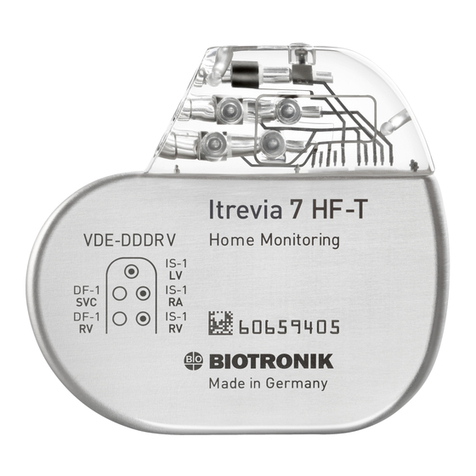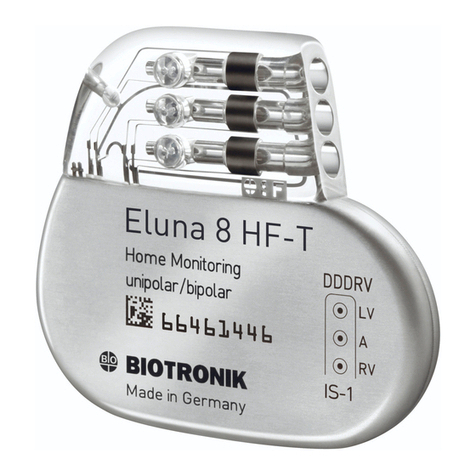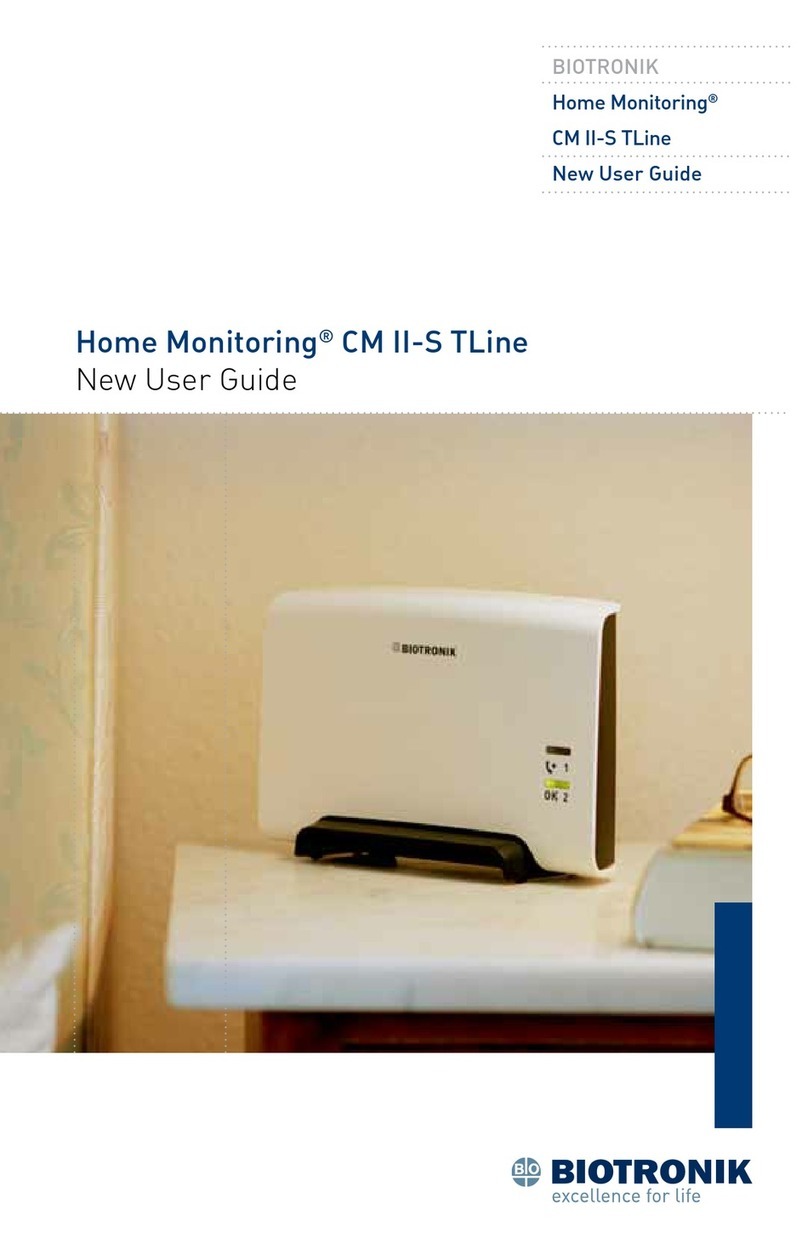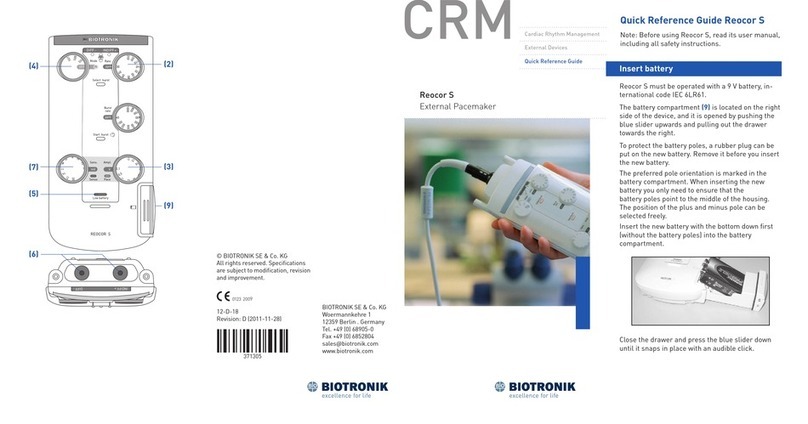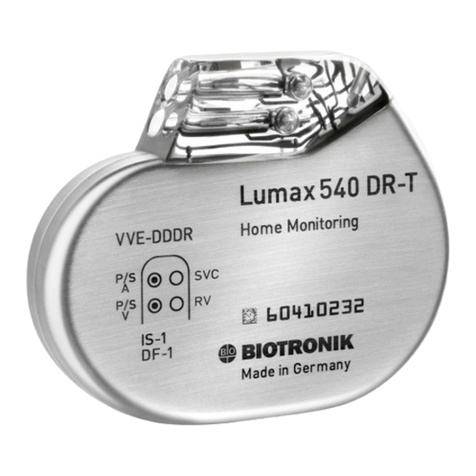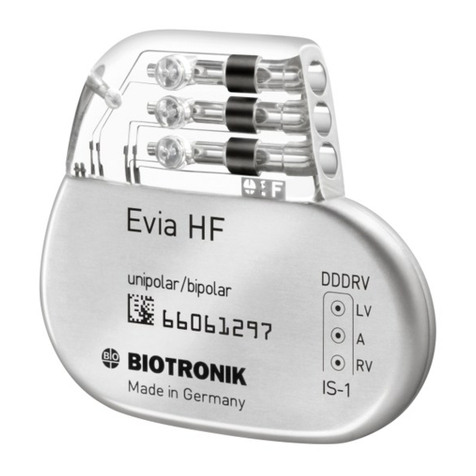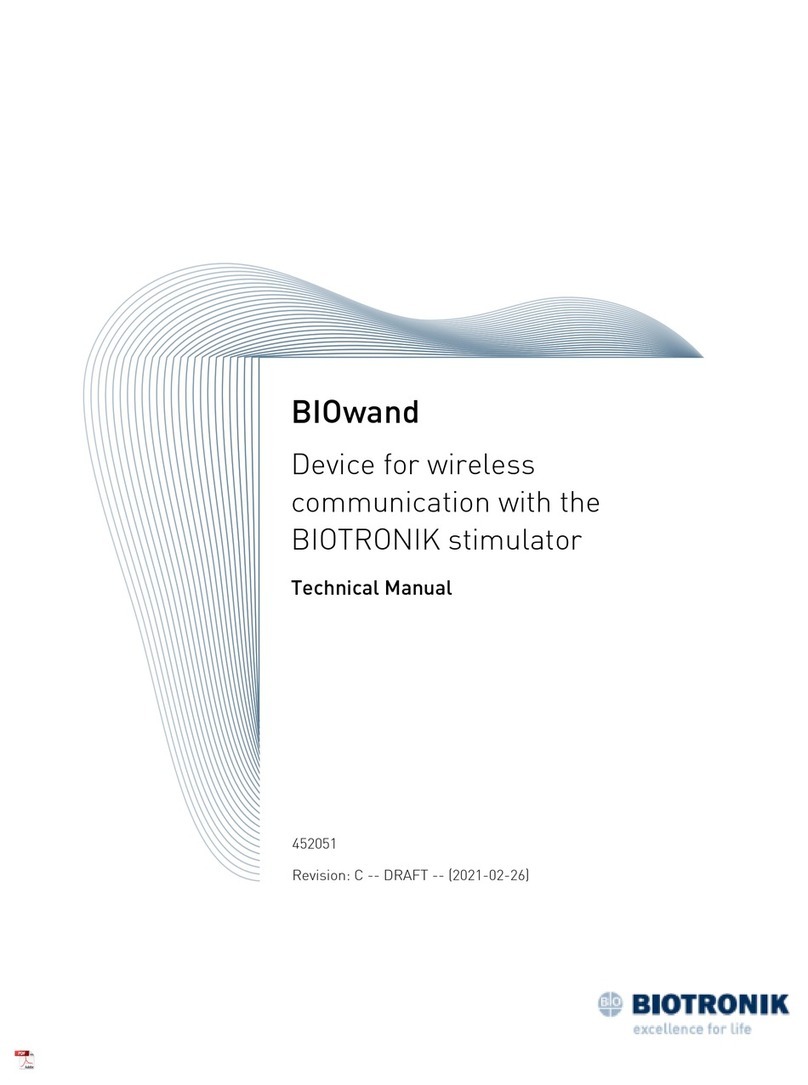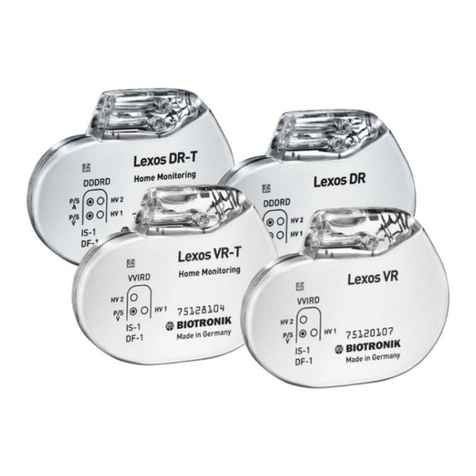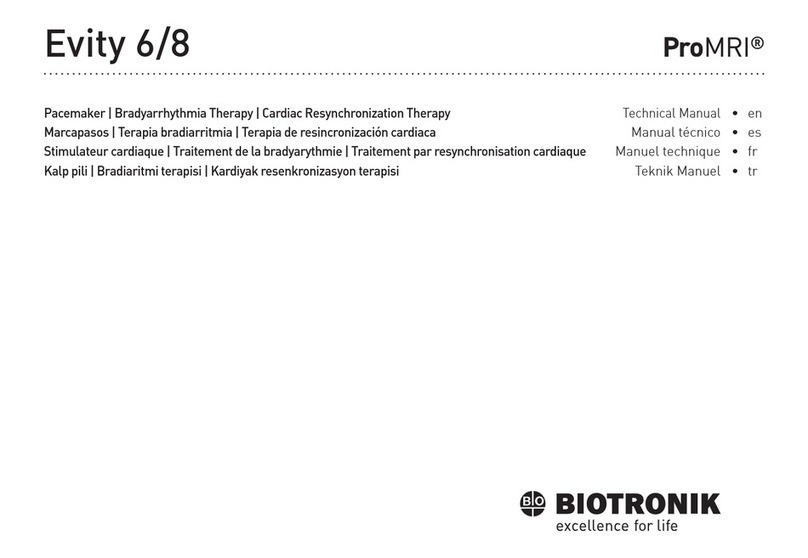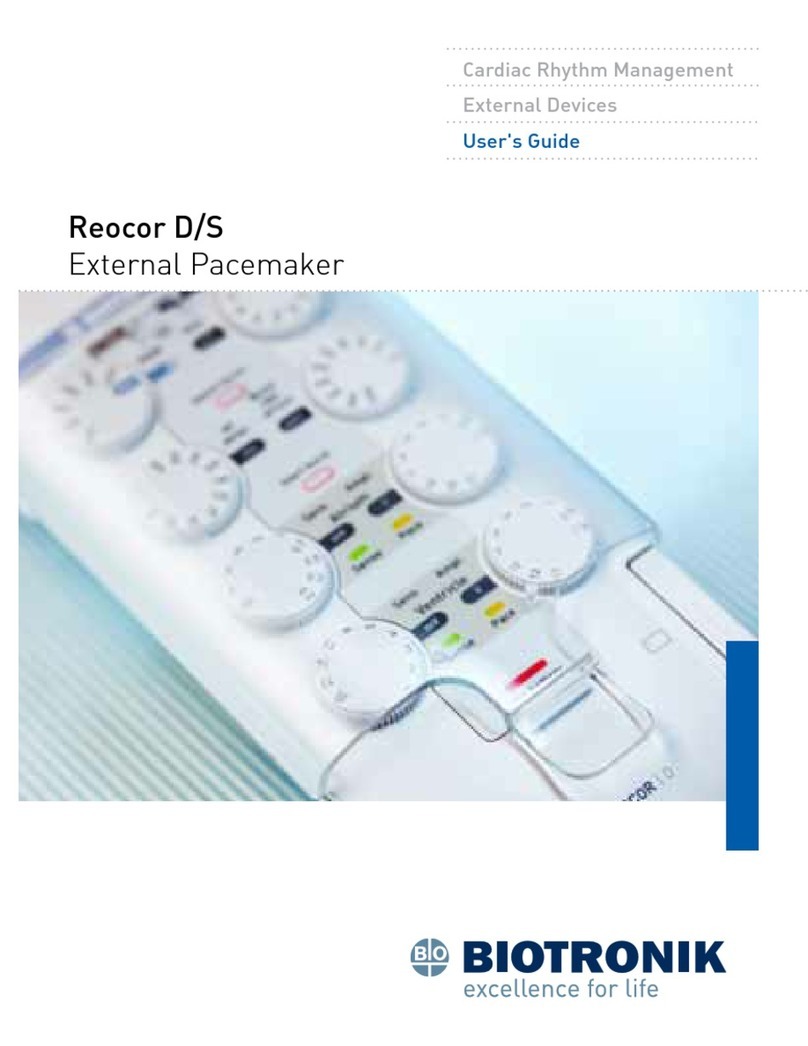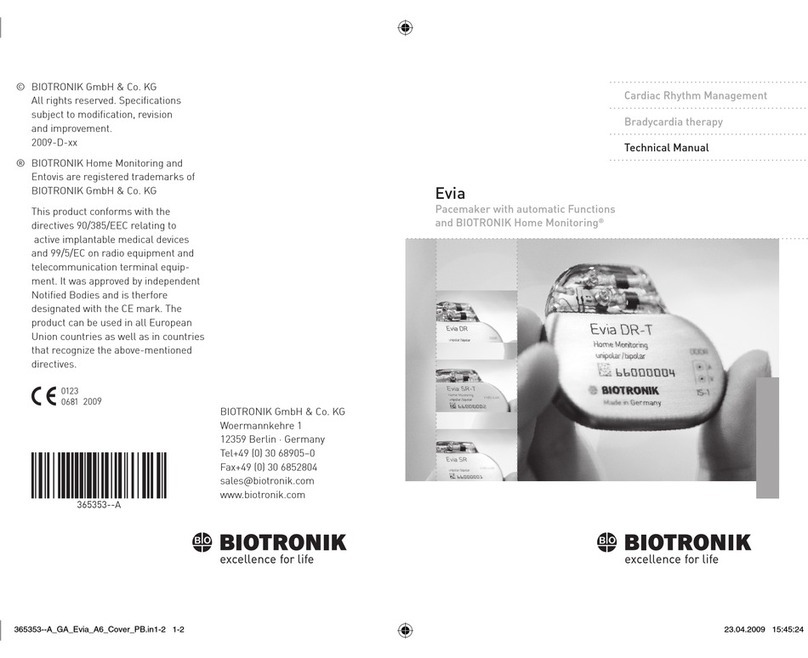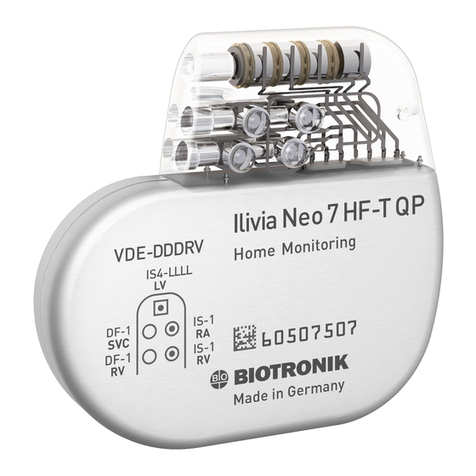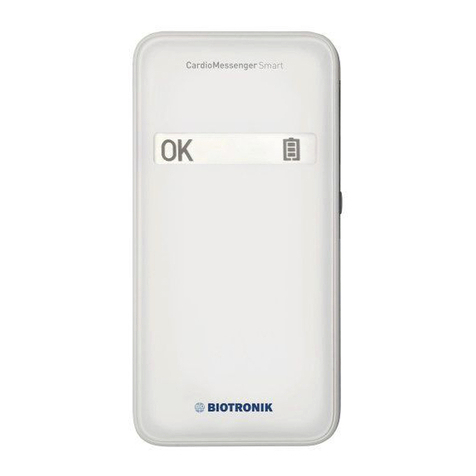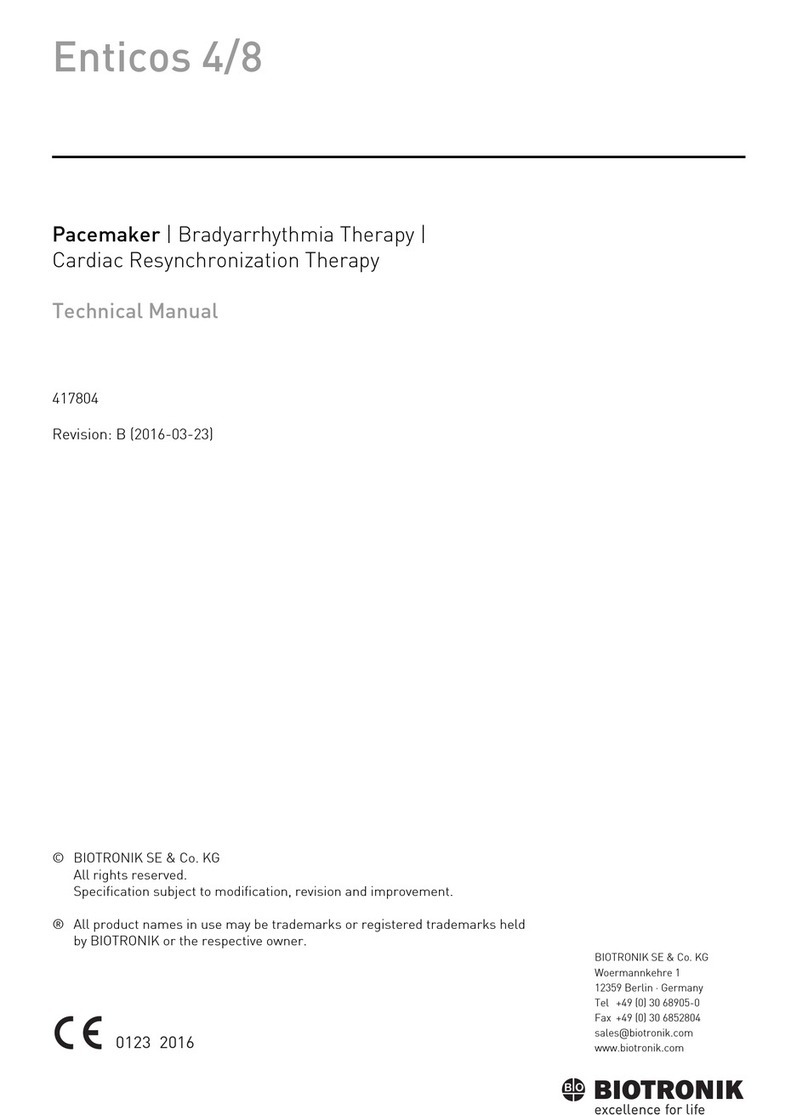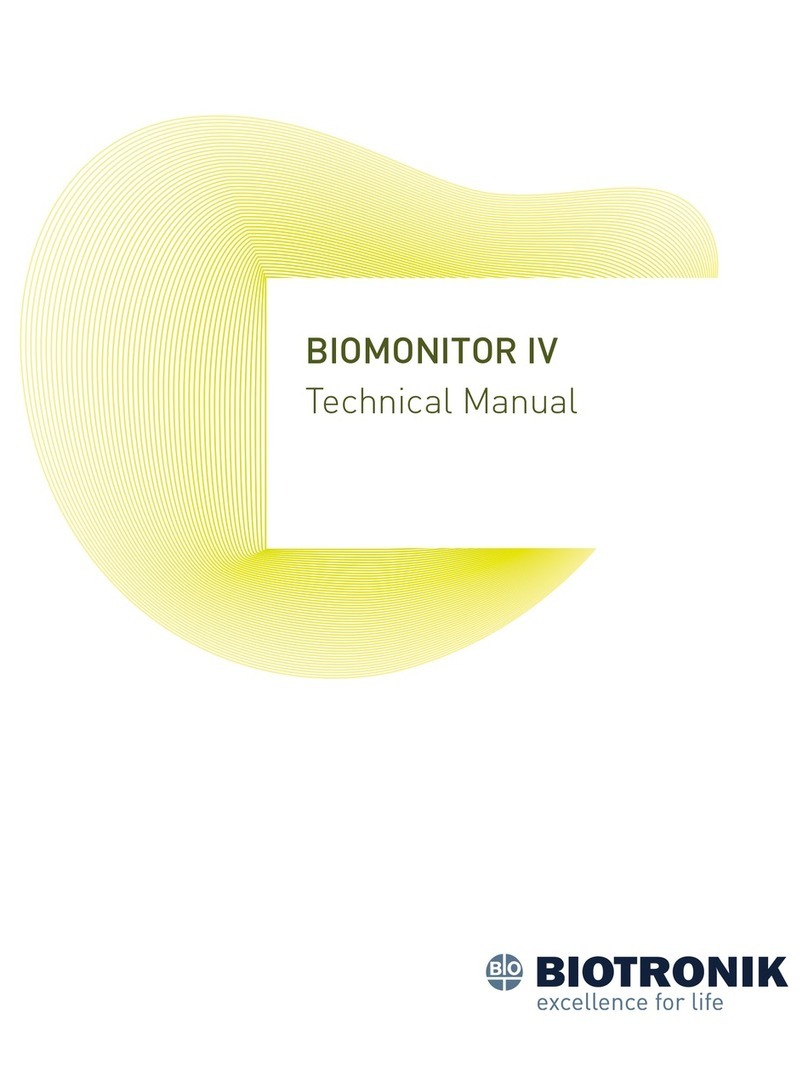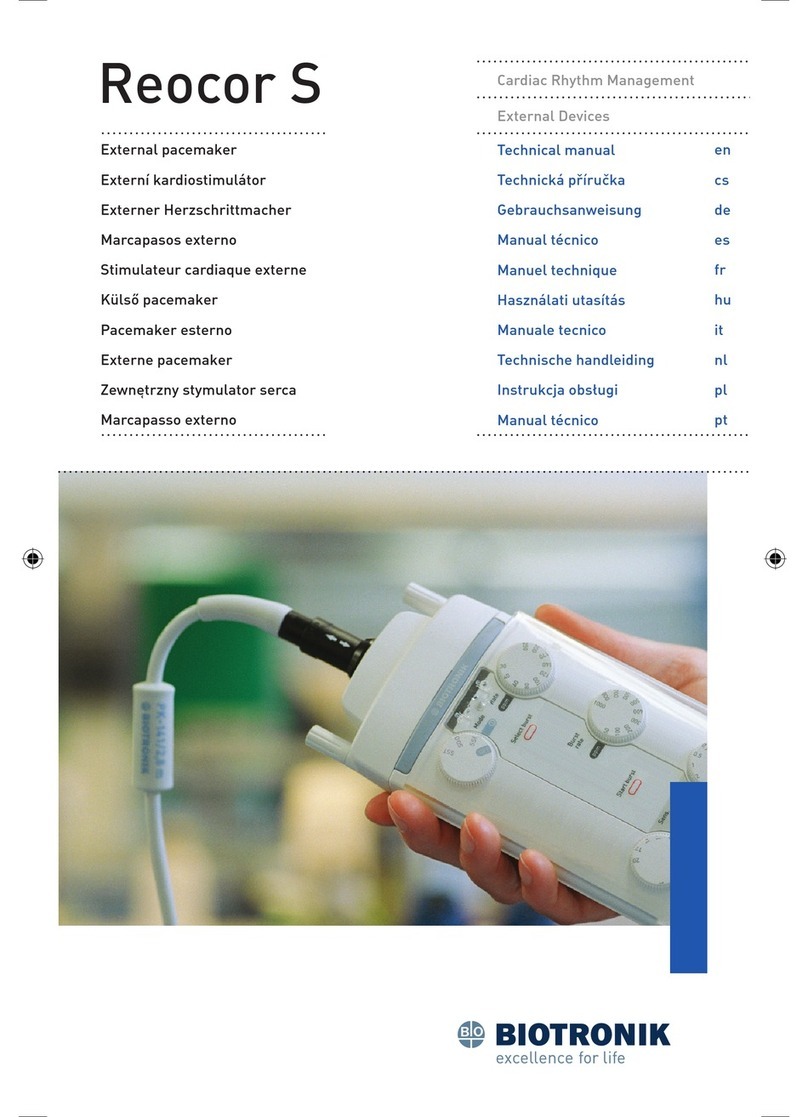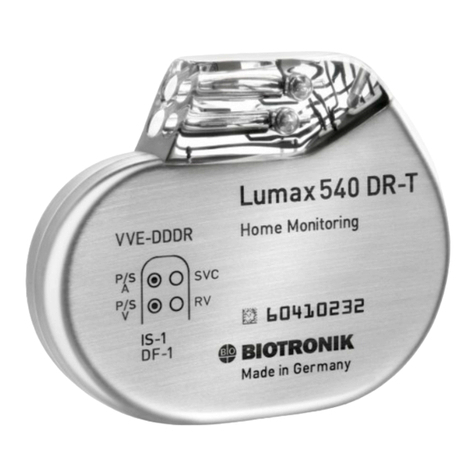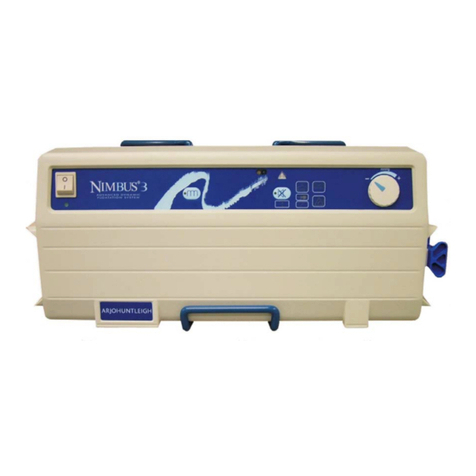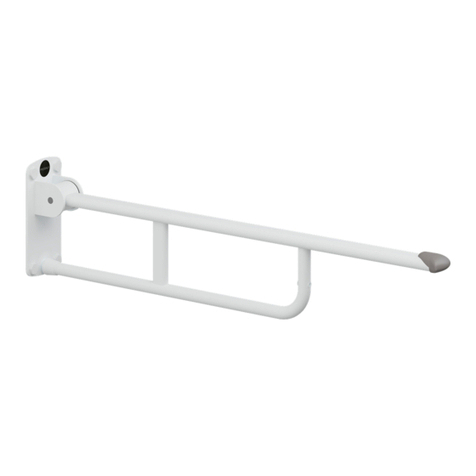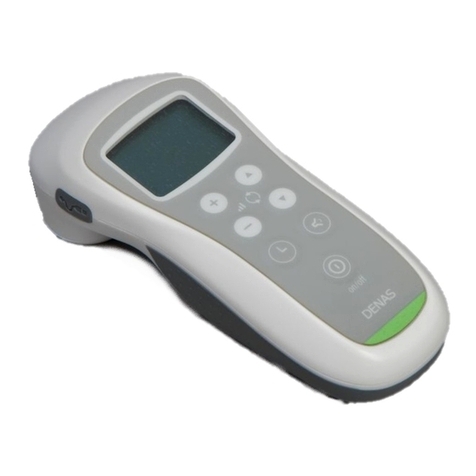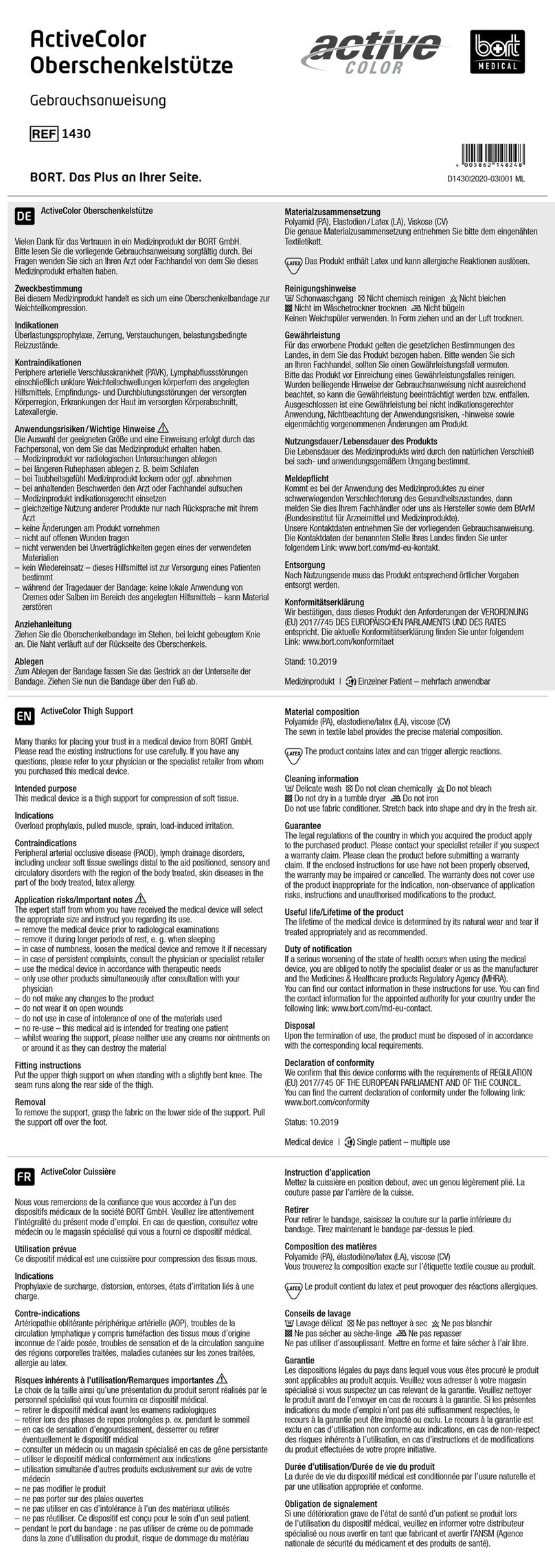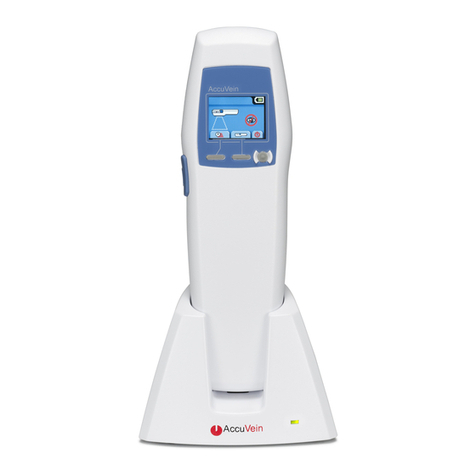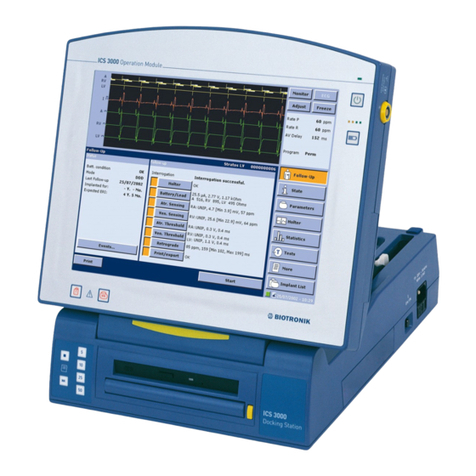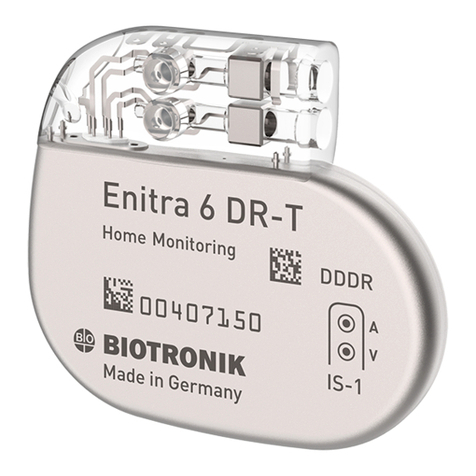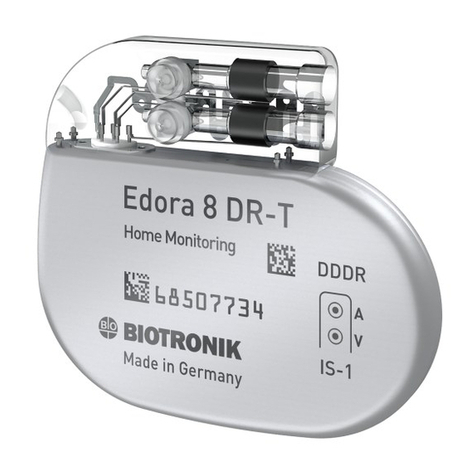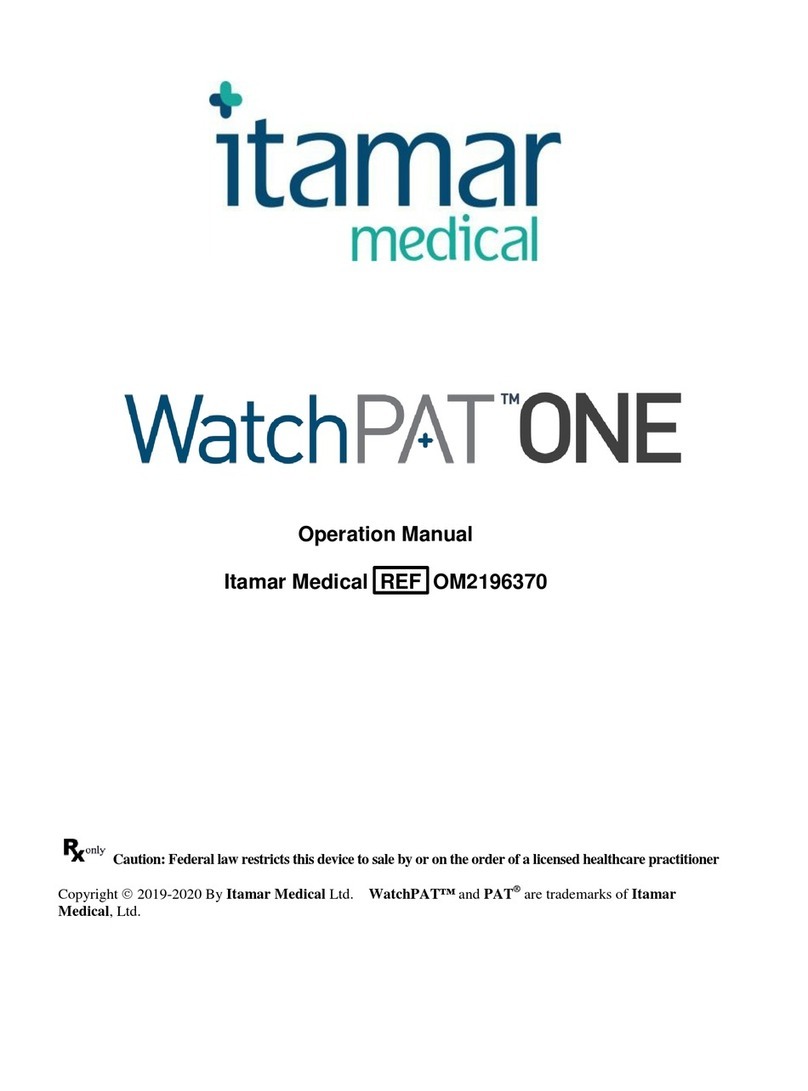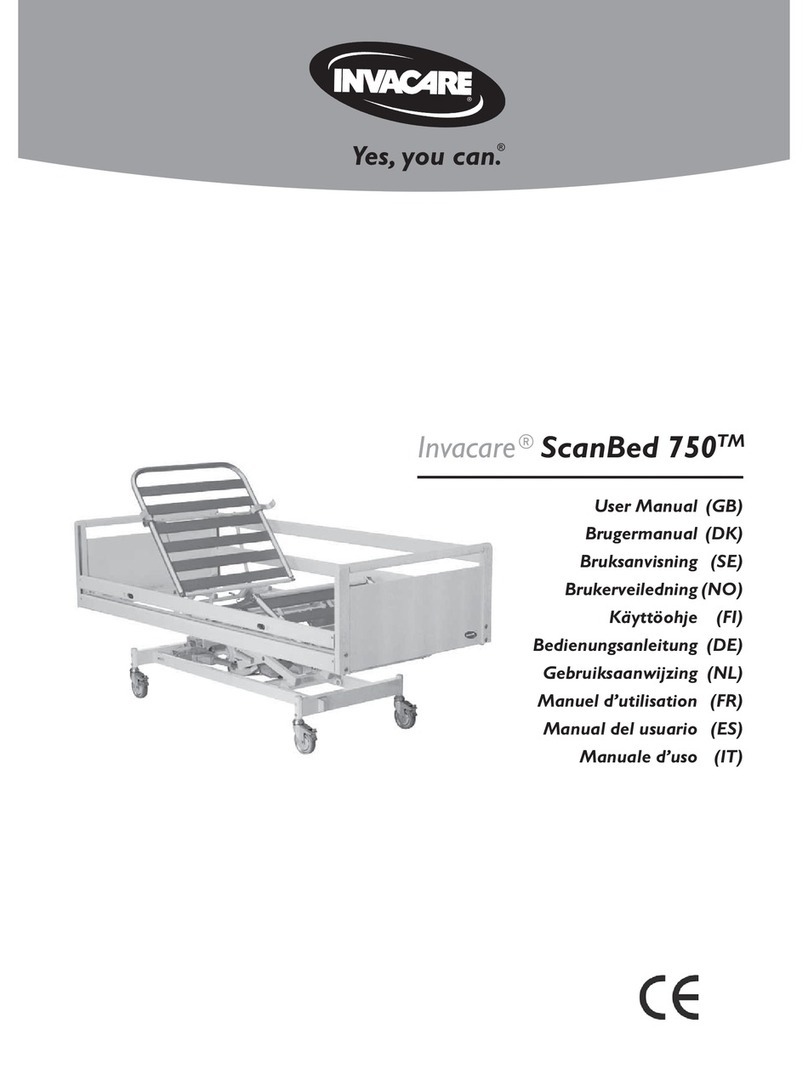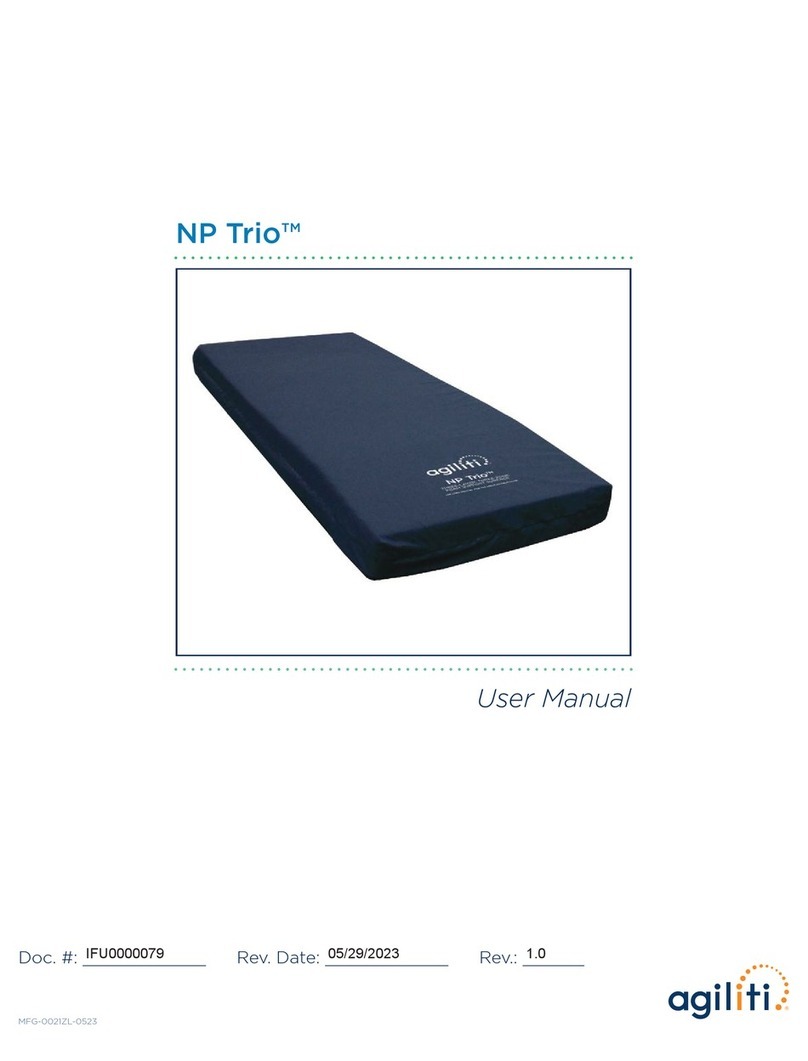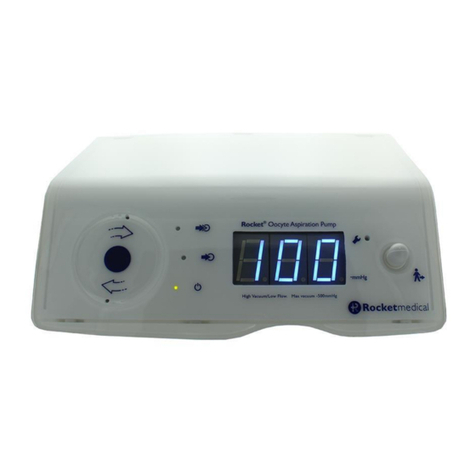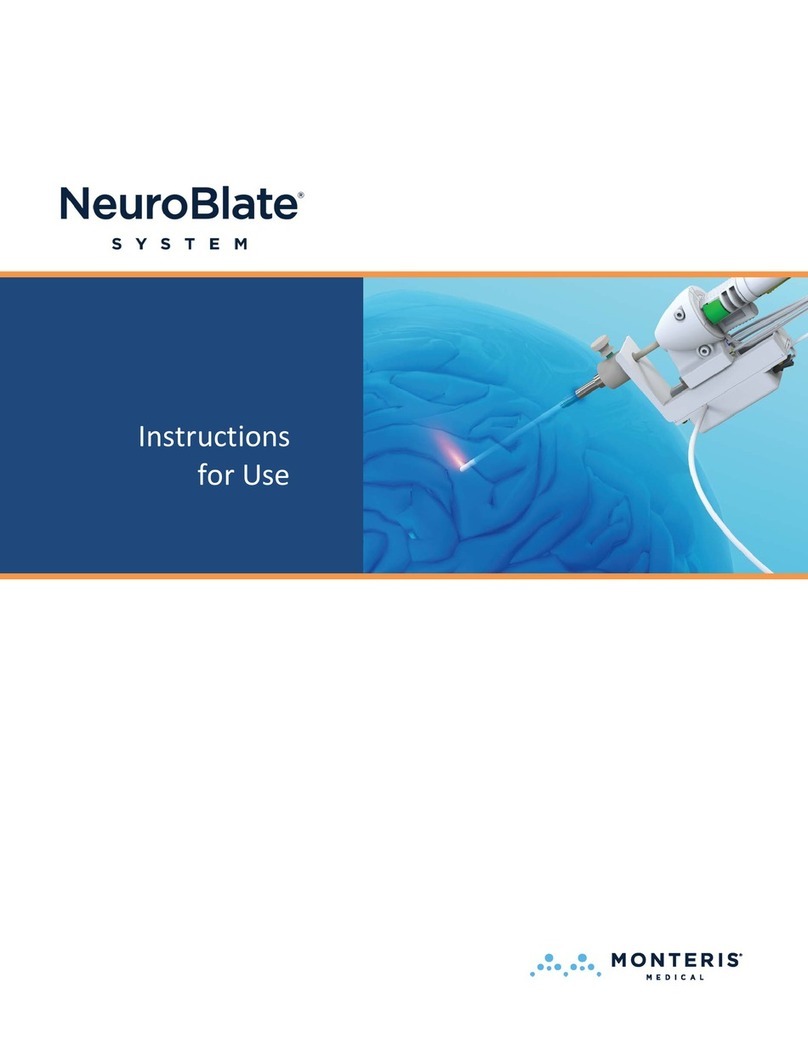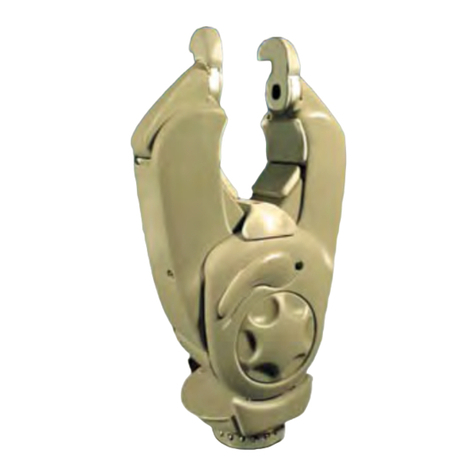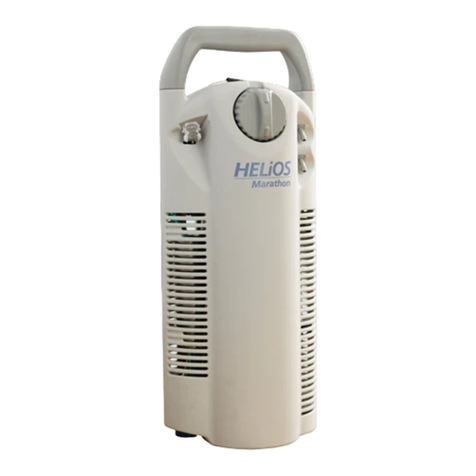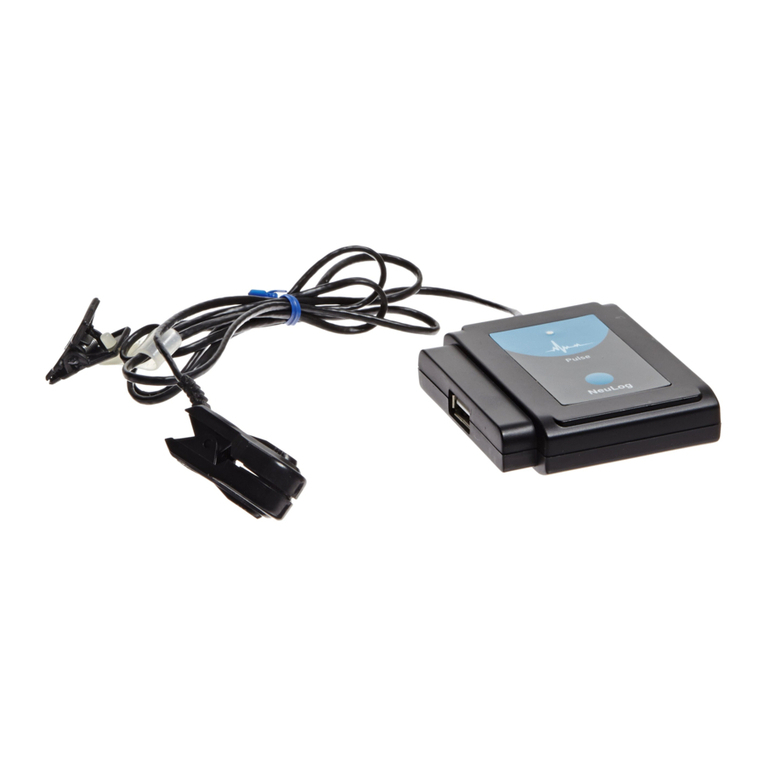
8
Potenzielle unerwünschte Ereignisse/
Komplikationen
Mögliche unerwünschte Ereignisse im Zusammenhang mit dem
PTCA-Eingriff beinhalten – einschließlich, aber nicht ausschließlich –
Folgendes:
•Kardiale Ereignisse: Myokardinfarkt oder Ischämie, abrupter
Verschluss des koronaren Zielgefäßes, Restenose des
behandelten Gefäßes, kardiogener Schock, Angina, Tamponade,
Perforation oder Dissektion von Koronararterie oder Aorta,
Herzperforation, Notfall-Herzoperation, Perikarderguss, Bildung
von Aneurysmen.
•Arrhythmische Ereignisse: Ventrikuläre Tachykardie, Kammer-
flimmern, Vorhofflimmern, Bradykardie.
•Ballonkatheter-Ereignisse: Die äsion kann nicht erreicht oder
durchquert werden, Schwierigkeiten beim Inflatieren, Zerreißen
oder Undichtheit des Ballons, Schwierigkeiten beim Deflatieren,
Schwierigkeiten beim Zurückziehen, Embolisierung des
Kathetermaterials.
•Respiratorische Ereignisse: Akutes ungenödem,
dekompensierte Herzinsuffizienz, respiratorische Insuffizienz
oder Atemversagen.
•Vaskuläre Ereignisse: Hämatom an der Eintrittsstelle,
Hypotonie/Hypertonie, Pseudoaneurysma, arteriovenöse
Fistelbildung, retroperitoneales Hämatom, Gefäßdissektion,
-ruptur oder -perforation, Intimariss, elastische Rückfederung
und Restenose, Thrombose oder Okklusion, Vasospasmus,
periphere Ischämie, distale Embolusbildung ( uft, Gewebereste,
Thrombus).
•Neurologische Ereignisse: Permanentes (Schlaganfall) oder
reversibles (TIA) neurologisches Ereignis, Verletzung des
N. femoralis, Verletzung von peripheren Nerven.
•Blutungsereignisse: Blutung oder Hämorrhagie an der
Eintrittsstelle, Hämorrhagie, die eine Transfusion oder sonstige
Behandlung erfordert.
•Allergische Reaktionen auf Kontrastmittel, Thrombo-
zytenaggregationshemmer, Antikoagulanzien.
•Tod.
•Infektionen.
Gebrauchsanleitung
Es muss ein geeigneter Pantera EO PTCA-Katheter für das
Zielgefäß ausgewählt werden. Der Inflationsdurchmesser des
Ballons darf den Durchmesser der Koronararterie oder des
Bypass-Transplantats proximal oder distal zur Stenose nicht
überschreiten. Wenn ein Durchqueren der Stenose mit dem
gewünschten Dilatationskatheter nicht möglich ist, kann ein PTCA-
Katheter mit kleinerem Durchmesser für eine Vordilatation der
äsion verwendet werden.
Vorb r itung d s PTCA-Kath t rs
01. Den Schutzring mit dem Katheter aus der Verpackung nehmen
und auf eine sterile Ablage legen.
02. Den Katheter vorsichtig aus dem Schutzring ziehen.
03. Den Ballonschutz und den Mandrin entfernen.
Das Führungsdrahtlum n vorspül n
04. Eine mit steriler Kochsalzlösung gefüllte Spritze an einer
Spülkanüle von geeigneter Größe anbringen.
05. Die Kanüle auf die distale Spitze des Katheters setzen und das
Führungsdrahtlumen durchspülen.
06. Spritze und Spülkanüle entfernen.
Kath t r ntlüft n
07. Einen Dreiweg-Absperrhahn am uer- ock des Katheters
anschließen.
08. Das Inflations-/Entleerungsgerät entsprechend den Anweisungen
und Empfehlungen des Herstellers vorbereiten und entlüften.
09. Das Inflations-/Entleerungsgerät mit 3 ml Ballon -
inflationsmedium füllen und an den Absperrhahn anschließen.
Warnhinweis: Ausschließlich geeignete Balloninflationsmittel
verwenden (z. B. Kontrastmittel und Kochsalzlösung zu
gleichen Volumenteilen). Unter keinen Umständen uft oder
andere gasförmige Medien zur Balloninflation verwenden.
10. Den Absperrhahn öffnen, sodass eine Flüssigkeitsverbindung
zwischen dem Katheter und dem Inflations-/Entleerungsgerät
besteht.
11. Am Kolben des Inflations-/Entleerungsgeräts ziehen und
mindestens 30 Sekunden lang uft aus dem Katheter
aspirieren.
Vorsicht: Wenn sich kein Unterdruck aufrechterhalten lässt, darf
der Pantera EO PTCA-Katheter NICHT verwendet werden, weil
dadurch ein Systemfehler angezeigt wird.
12. Den Absperrhahn schließen, sodass der Flüssigkeitsweg zum
Katheter unterbrochen wird, und das Inflations-/
Deflationsgerät durch den Absperrhahn vollständig entlüften.
13. Die Schritte 10 bis 12 bei Bedarf wiederholen, um
sicherzustellen, dass die uft aus dem Ballon und dem
Inflationslumen entfernt wurde. Den Zylinder des Inflations-/
Entleerungsgeräts wieder auf Normaldruck bringen.
14. Den Absperrhahn öffnen und das System zur späteren
Verwendung beiseite legen.
Einführt chnik
15. Ein hämostatisches Ventil am uer-Anschluss des im
Gefäßsystem liegenden Führungskatheters anbringen.
16. Den Führungsdraht gemäß üblicher PTCA-Technik unter
Röntgenkontrolle platzieren.
17. Das proximale Ende des Führungsdrahts retrograd in die distale
Spitze des PTCA-Katheters laden, bis es an der Führungsdraht-
Austrittsöffnung (34 cm von der distalen Spitze) zum Vorschein
kommt.
18. Den PTCA-Katheter vorsichtig durch das hämostatische Ventil
einführen.
19. Den PTCA-Katheter durch den Führungskatheter vorschieben.
Dabei auf dem Röntgenschirm verfolgen, wann die
Katheterspitze sich der distalen Spitze des Führungskatheters
nähert.
Hinweis: Anhand der proximalen Austrittsmarkierungen kann
festgestellt werden, wann der PTCA-Katheter ungefähr das
distale Ende des Führungskatheters erreicht hat.
20. Den PTCA-Katheter in das Zielgefäß und auf dem
Führungsdraht auf die äsion vorschieben.
Hinweis: Die Röntgenmarkierungen am Ballon erleichtern die
Positionierung innerhalb der äsion.
Warnhinweis: Wenn beim Bewegen des Katheters ein starker
Widerstand zu spüren ist, den Eingriff unterbrechen und die
Ursache des Widerstandes feststellen, bevor fortgefahren wird.
Das gewaltsame Vorschieben kann zu Gefäßverletzungen
und/oder Risswunden oder zum Abreißen des Führungsdrahts
oder des PTCA-Katheters führen. Dadurch kann eine Bergung
von Bruchstücken des Produkts nötig werden.
Balloninflation
21. Den Ballon zwecks Dilatation der äsion gemäß der üblichen
PTCA-Technik inflatieren.
Warnhinweis: Den Nenn-Berstdruck (RBP) NICHT überschreiten.
Warnhinweis: Um die Gefahr einer Gefäßverletzung zu minimieren,
darf der Ballondurchmesser im inflatierten Zustand den
Originaldurchmesser des Gefäßes proximal und distal zur
äsion nicht überschreiten.
22. iegt weiterhin eine signifikante Stenose vor, den Ballon erneut
inflatieren und allmählich den Druck erhöhen, bis sich die
äsion nicht weiter verbessert.
23. Nach jeder Inflation mittels Arteriographie durch den
Führungskatheter die distale Durchblutung prüfen.
Ballond flation
24. Den Ballon nach den üblichen PTCA-Methoden deflatieren.
Mindestens 40 Sekunden lang negativen Druck auf den Ballon
ausüben, bevor der PTCA-Katheter vorsichtig aus dem Gefäß
entfernt wird.
25. Den komplett deflatierten PTCA-Katheter in den Führungs-
katheter ziehen.
Entf rnung d s Kath t rs/Austauschproz dur
26. Das hämostatische Ventil lösen.
27. Den Führungsdraht und das hämostatische Ventil in einer Hand
halten und den Schaft des PTCA-Katheters mit der anderen
Hand ergreifen.
28. Die Position des Führungsdrahtes in der Koronararterie durch
Stillhalten des Führungsdrahtes beibehalten und beginnen,
den Dilatationskatheter aus dem Führungskatheter
herauszuziehen.
Hinweis: Es wird dringend empfohlen, die Position des
Führungsdrahtes während des Austausches radiologisch zu
überwachen.
29. Am Katheter ziehen, bis die Führungsdraht-Austrittsöffnung
erreicht ist. Vorsichtig den flexiblen, distalen Teil des PTCA-
Katheters vom Führungsdraht entfernen und dabei die Position
des Führungsdrahtes in der äsion beibehalten. Das
hämostatische Ventil schließen.
Hinweis: Treten während der Entfernung des Katheters
Schwierigkeiten auf, so muss das gesamte System sofort
entfernt werden, d. h. der Führungskatheter, der
Führungsdraht und der PTCA-Katheter müssen gleichzeitig
entfernt werden.
30. Den PTCA-Katheter vollständig vom Führungsdraht
herunterziehen.
31. Bei Bedarf den nächsten zu verwendenden PTCA-Katheter
gemäß der Beschreibung oben oder gemäß den
Herstelleranweisungen vorbereiten und einführen.
Hinweis: Den PTCA-Katheter unmittelbar nach dem Herausziehen
aus dem Patienten auf seine Unversehrtheit überprüfen.
32. Das Produkt und die Verpackung nach dem Gebrauch gemäß
den Krankenhausrichtlinien sowie den Vorschriften der
Verwaltung und/oder örtlichen Behörde entsorgen.
Gewährleistung/Produkthaftung
Das Produkt und alle Bestandteile des zugehörigen Systems (im
Weiteren „das Produkt“) sind mit aller angemessenen Sorgfalt
entwickelt, hergestellt, geprüft und verpackt worden. Die
Bedingungen, unter denen das Produkt angewendet wird, liegen
jedoch außerhalb der Kontrolle durch BIOTRONIK, und es kann aus
verschiedenen Ursachen zu einer Störung der vorgesehenen
Funktion des Produkts kommen. In diesem Zusammenhang
verstehen sich die Warnhinweise in dieser Produktschrift/
Gebrauchsanweisung ausdrücklich als Bestandteil dieses
Haftungsausschlusses und enthalten vollständigere Informationen.
Daher weist BIOTRONIK alle ausdrücklichen oder
stillschweigenden Gewährleistungen zu diesem Produkt ab,
einschließlich, ohne Einschränkung, der Zusicherung der
Handelstauglichkeit und der Eignung für einen bestimmten Zweck.
Produktbeschreibungen oder Richtlinien für Anwender in
Veröffentlichungen stellen keine ausdrückliche Zusicherung oder
ausdrückliche oder stillschweigende Gewährleistung dar.
BIOTRONIK übernimmt keine Verantwortung für direkte, Begleit-
oder Folgeschäden oder für medizinische Kosten aufgrund der
Anwendung, eines Defekts, eines Versagens oder einer
Fehlfunktion des Produkts, gleichgültig, ob diese Ansprüche
aufgrund eines Vertrags, einer Gewährleistung oder
unrechtmäßigen Handlung erhoben werden. Bei Vorsatz oder grob
nachlässigem Verhalten durch rechtmäßige Vertreter bzw.
Mitglieder der Geschäftsleitung von BIOTRONIK trifft dies nicht zu.
Im Handelsverkehr ist die Haftung auf den Ersatz der üblichen
Schäden beschränkt. Es besteht kein Ersatzanspruch für unübliche
oder Begleitschäden. Diese Haftungs- und Gewährleistungs-
beschränkungen zielen nicht darauf ab, zwingende Bestimmungen
der gültigen Gesetze im jeweiligen and zu umgehen. Falls
irgendeine Bestimmung dieses Haftungsausschlusses von einem
zuständigen Gericht für ungültig bzw. mit dem geltenden Recht für
unvereinbar erklärt wird, bleiben die übrigen Bestimmungen davon
unangetastet und sind weiterhin voll gültig. Die ungültige
Bestimmung ist durch eine gültige Bestimmung zu ersetzen, die
am besten dazu geeignet ist, das berechtigte Interesse seitens
BIOTRONIK an einer Beschränkung seiner Haftungs- und
Gewährleistungspflichten ohne Konflikt mit zwingenden
Bestimmungen der gültigen Gesetze zu schützen. Niemand ist dazu
berechtigt, BIOTRONIK zu einer Gewährleistung oder Haftung in
Bezug auf das Produkt zu verpflichten.
Description
e cathéter à échange rapide pour ACTP Pantera EO (ci-après
désigné par « le cathéter pour ACTP Pantera EO ») est conçu pour
la dilatation des segments sténosés des artères coronaires et pour
la post-dilatation des endoprothèses coronaires. e ballonnet de
dilatation est conçu pour être gonflé à un diamètre et une longueur
connus, et à des pressions de gonflage recommandées (consulter le
tableau de compliance (Compliance Chart), page 2). Il est muni de
deux marqueurs radio-opaques, l’un à l’extrémité proximale et
l’autre à l’extrémité distale de la partie cylindrique du ballonnet, ce
qui facilite la visualisation et le positionnement du cathéter sous
Français
IFU Pantera LEO Versi n A_ml_430334 28.10.2016 15:14 Seite 8
